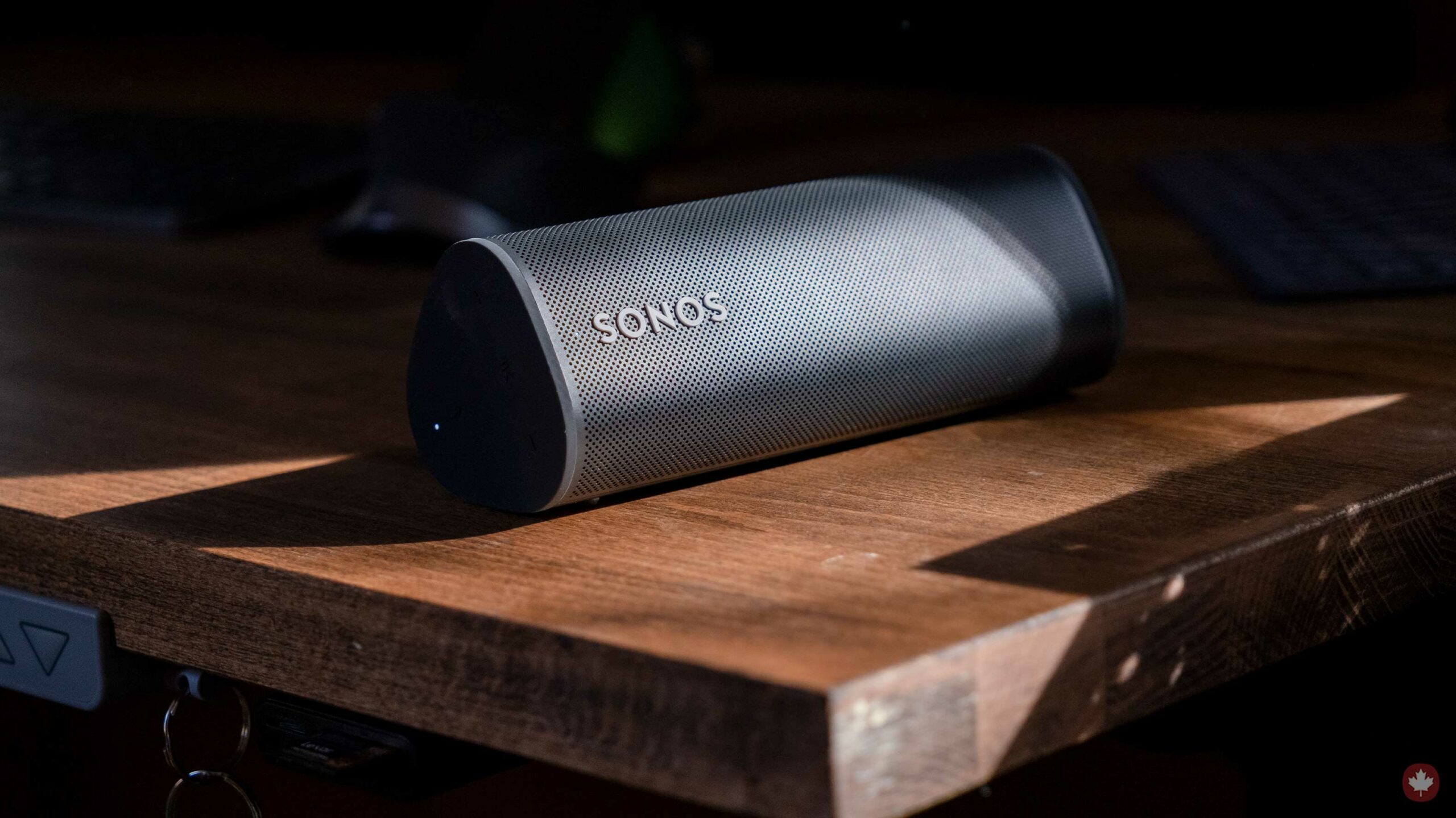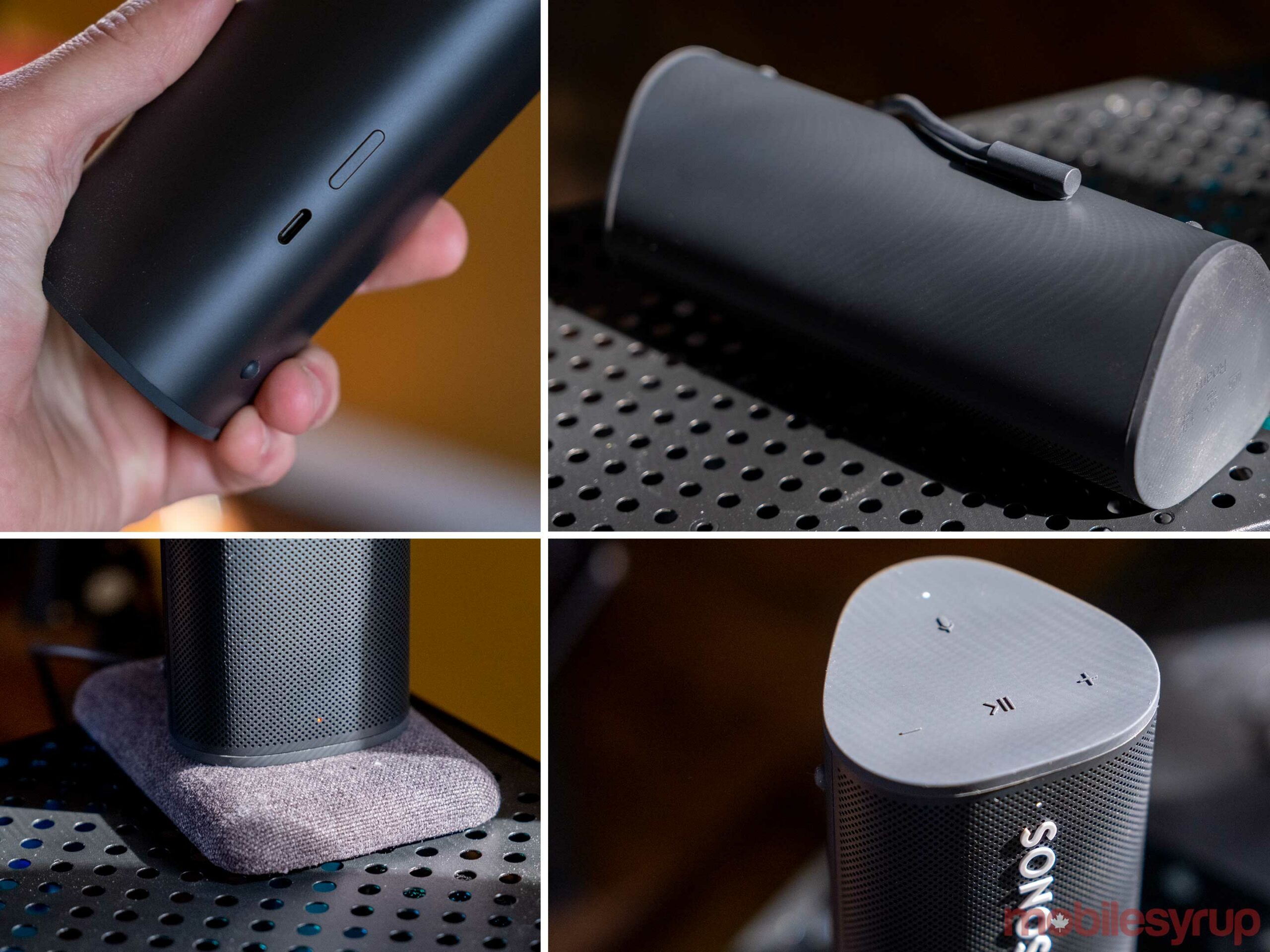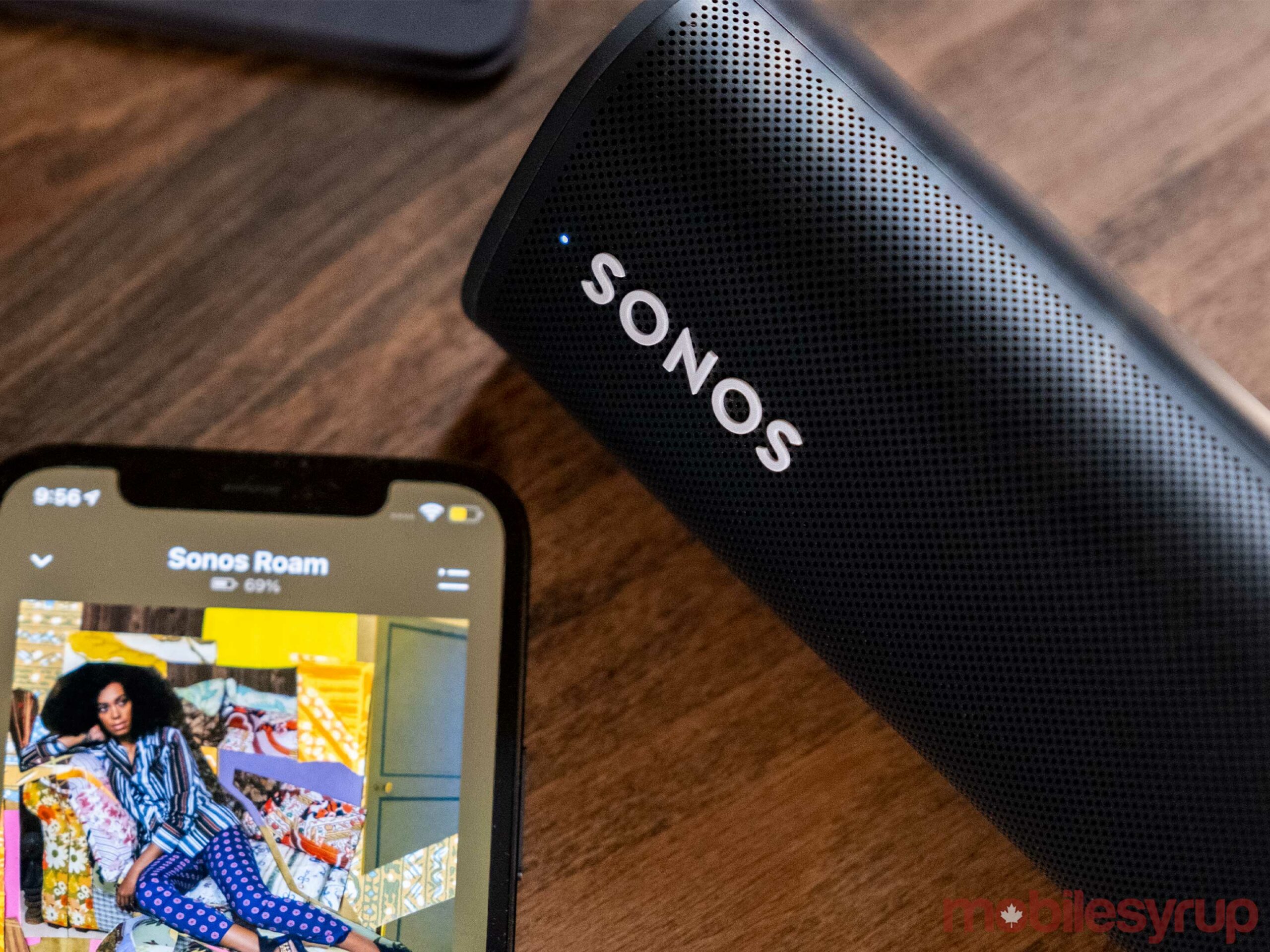
The Pros
- Premium materials
- Big sound in a small body
- Has access to all of Sonos' features
The Cons
- Doesn't float
- Sonos software can be a tad overbearing
- battery life is a little lacklustre
Sonos finally did it. The company has released the portable Bluetooth speaker that fans of the brand have been asking for.
The Roam is a small, portable device with Bluetooth pass-through, decent battery life and the well-tuned Sonos sound the company’s speakers are known for. All of this is wrapped in premium hardware that looks and feels great.
This might sound like the perfect speaker, but it isn’t without a few drawbacks. That said, I suspect most of my issues with the Roam are easy to overlook for anyone who’s already invested in Sonos’ ecosystem. Even if you already have a single Sonos speaker, the Roam is a perfect add-on to that system thanks to its reasonable price and portability.
However, for anyone not already invested in Sonos’ ecosystem, the decision to get a Roam isn’t so cut and dry.
There’s no denying that the Sonos ecosystem brings a lot of extra features and value to its speakers, but if you just want a single portable speaker, you need to weigh how often you’ll use these features and if they’re worth it for you.
Why you’d want a Sonos Roam
The Sonos Roam is a great portable speaker. It features a cute design, room-filling sound quality and access to the company’s smart speaker ecosystem. This gives it a real advantage over the competition and places it in the top tier of portable Bluetooth speakers, like the UE Boom 3, the Bose Soundlink colour and the JBL Flip 5.
When you first hold the Roam, you’ll notice that its triangle design fits into your hand. The build quality also feels quite premium, with a soft rubberized back and a smooth plastic front. If you’ve felt a Sonos Move, the materials feel the same, but it only weighs 0.43kg and is easier to carry around.
“I really like the Roam, but it’s not quite as mind-blowing as the company’s other speakers”
The speaker can stand upright or on its side. When it’s on its laying down, the triangle shape does a good job of directing the sound up, which is ideal since it’s often going to be placed on tables and low furniture. All the buttons on the top are very clicky and Sonos finally got rid of its confusing touch-sensitive buttons and replaced them with a more traditional layout and control scheme.
The Roam also charges via USB-C at up to 15-watts and wirelessly with a Qi-compatible charger. You can buy a magnetic dock from Sonos that wirelessly charges the Roam or use another wireless charger to establish a home for the speaker in your house. While expensive, magnetic chargers ensure your device is always placed correctly.
Since this speaker is a Sonos product, it’s a smart speaker whenever it’s connected to Wi-Fi. This also means it’s always using a little battery. The company says the Roam can last for up to ten days in sleep mode, but if you’re playing music on it every day, it will die somewhat quickly since it only has 10-hours of music playback.
This is why it’s great to have a home base that keeps the Roam charged when not in use. The Sonos Move came with a dock and it never really dies in my house since it always goes back to its dock to charge when I’m done with it. You can do the same thing with a cable and the Roam, but it’s more convenient to drop it onto a wireless charger.
The Roam’s sound quality is also pretty great. I find it balanced and when I place it about head level on top of my shelf, it fills my office with impressive sound that most people would be surprised comes from such a small speaker. There are two speaker drivers inside the device, including a tweeter for crisp highs and a mid-woofer to cover the mid-range and bass.
This is a solid combo that doesn’t blow out the bass like many other speakers, but its sound profile isn’t as versatile or well-equipped as the company’s other speakers. The Roam is a decent sounding Bluetooth speaker, but it doesn’t offer sound that’s as detailed or as full as the Sonos One, the Move or even a lower-priced Ikea X Sonos Symfonisk speaker.
I really like the Roam, but it’s not quite as mind-blowing as the company’s other speakers. It shines at louder volumes, but music becomes a bit muddier when you turn it down low. That said, the sound coverage feels more expansive than you’d expect from a small speaker, and the more I use it, the more it surprises me.
This can be attributed to the speakers of course, but also Sonos’ Auto TruePlay technology. It scans a room using the speaker’s built-in microphones and adjusts its music output to give the best sound possible for your space. TruePlay works great indoors where it uses corners and other surfaces to bounce sound. It also works over Bluetooth outside, but it’s not as noticeable.
Since this is a Sonos speaker, you also get access to all the company’s smart features. This includes multi-room audio with other Sonos speakers and AirPlay 2 devices. One of the new features the company added to the Roam is the ability to connect your phone to Bluetooth and then cast that song to all your other Sonos speakers.
The other new feature is the ability to pass music from the Roam to your other Sonos speakers by holding the play/pause button for three seconds. Like Bluetooth pass-through, this isn’t something I often use since I rarely walk into my house with music playing on my Bluetooth speaker. If I did, I would just take the speaker with me to wherever I’m going since that’s typically easier than swapping to another Sonos device.
You can also take music from another Sonos speaker by holding the Roam near it and holding the play/pause button. Once again, this isn’t a feature I used much, but once I pulled music playing from a Sonos One to the basement using the Roam and not the Sonos app, it felt pretty slick.
Like Sonos’ other speakers, the Roam has the ability to act as either a Google Assistant or Alexa smart speaker. Overall, its three mic array works well and I felt that it was able to hear me from a decent distance. These even worked fairly well when the music was playing loudly.
Why you might not want a Roam
There really isn’t anything significantly wrong with this speaker other than it might be overloaded with features you can’t use if you don’t own other Sonos smart speakers.
For instance, you need to download the Sonos app and setup this speaker over Wi-Fi with a Sonos account. The setup process is pretty smooth and uses NFC to transfer info if you already have a Sonos system. But if you just want a simple Bluetooth speaker, this is a lot of setup compared to turning a speaker on, pairing it with your smartphone over Bluetooth and playing music.
Beyond that, having to play music via a connected app will likely be a little annoying for some users. That said, both Apple Music and Spotify can cast to Sonos products quite easily, but it’s still a little more confusing than Bluetooth. Sonos can play music at higher quality via Wi-Fi than Bluetooth, but that really doesn’t matter with a smaller speaker like this.
“While the Roam is IP67 rated, allowing it to be submerged in a few feet of water for a short amount of time, it doesn’t float like other rugged Bluetooth speakers”
Beyond that, you need to keep the Roam plugged in whenever you’re not using it. This isn’t the case with other Bluetooth speakers. When I’m not using my UE Wonderboom 2, I just turn it off and leave it on a shelf. When I turn it on the next time I pick it up, it’s still good to go. Since the Sonos Roam goes into a low-power state so it can always act as a smart speaker when on Wi-Fi, I find that it dies more often than I’d like.
While the Roam is IP67 rated, allowing it to be submerged in a few feet of water for a short amount of time, it doesn’t float like other rugged Bluetooth speakers. This isn’t going to affect most people who use the speaker, but, the added peace of mind of a floating speaker if you spend a lot of time near water, is priceless.
I also use the hooks and straps on other speakers to hang them on my backpack or high places to play music from. Unfortunately, the Roam lacks this feature as well.
Closing thoughts
As a speaker, the Sonos Roam is great. It provides balanced sound, and when it comes down to it, that’s enough for most people.
It even features access to a lot of high-level features like multi-room audio, Amazon and Google’s digital assistants, wireless charging and more. Sonos fans are likely to be pleased with this $229 speaker that fits into a bag way more easily than a Move.
However, for many people, these extras features are likely to go unused and might even be annoying in the long run. If you just want a simple Bluetooth speaker that acts more as you’d expect without all the extra bells and whistles, the $200 UE Boom 3 costs a little less than the Sonos Roam, sounds the same, has a better battery life and floats if you drop it in a lake.
It really comes down to if you see yourself collecting a few more Sonos speakers over the years or not. If you plan to build a Sonos-based home audio system, then the Roam is the perfect place to start. If you just want a Bluetooth speaker, I’d look elsewhere.
Sonos has come a long way in the last few years. It dominated the living room audio space with the Arc. It got its speakers into an Audi car, and now it even has a really compelling portable Bluetooth speaker. All that’s really left to do is take on the headphone market, which rumours indicate the company might do very soon.
You can pre-order the Roam from Sonos for $229 CAD.
"This is the perfect speaker for Sonos fans, for everyone else, it's just a speaker"
MobileSyrup may earn a commission from purchases made via our links, which helps fund the journalism we provide free on our website. These links do not influence our editorial content. Support us here.








